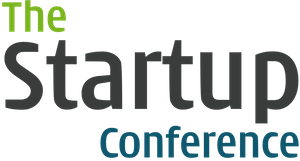Last week Dropbox went public and Drew Houston, its CEO, joined a very small club of entrepreneurs that took their startup from idea to IPO.
I first discovered Dropbox at TechCrunch 50, where I was also launching my own startup on stage earlier that day. I thought it was pretty lame: who needs another file synchronization tool? Boy was I wrong. (Also at TechCrunch 50 that year, who cares about a source revision control tool? What’s this GitHub thing anyway? — live and learn)
So I invited Drew to speak at the first Startup Conference (in 2010). His timeless advice is worth watching again today for entrepreneurs, new and seasoned.
Below are the best excerpts from his talk.
On Himself
The most charitable thing you could have said about me is, I’m an engineer, I’m not a marketer but I read some books on amazon. That’s about it.
You have no idea how to raise money. I maybe directly managed people for 3 months in my life, I never built a team before. Your life as a founder CEO changes so dramatically every 6 to 9 months. That’s the exciting thing about it but also the very hard part about it.
I spent the bulk of my 20s figuring out that cross-platform scalable cross-storage is a really hard thing to build.
On Marketing
The problem with the Segway is not that the thing didn’t work, it’s that you look like a douche when you’re riding one. They spent millions of dollars to figure that out.
We’d love to make Paul [Graham] happy and launch as early as possible, but what we’re doing already has 100 competitors out there.. None of them were really that great.
Part of my personal frustration is that I tried everything out there. You give something a shot, you go to the forums and see all these angry people because the thing works 99% of the time but 1% of the time it doesn’t work.
The key is to find the early audience people that all talk to each other so you can get that initial boost.
On launch plans
Let’s go find a really good search consultant, he’ll help us get a ton of adwords and get people to sign up. We did all this work. We had to hide our free product from the people coming from google, and all these shenanigans. We did all these things, everything kind of worked, except the cost to acquire a paying customer was $400 for something that cost $100. Not exactly sustainable, a total disaster.
The funny thing is, after all these things that we were putting all this effort into and totally screwing up, we were still crushing it: we hit 1 million users in 7 months, we had this really enthusiastic community. What is going on?
We were almost all engineers. we didn’t do any mainstream PR. Partnerships all were disastrous.
We launched our referral program, the next day sign-ups increased 60% and they stayed up. Not bad. […] More than half of our growth is from word of mouth and viral features of the product (if I share a folder with you, you can’t get to it unless you install dropbox).
Sweating the details
For us, it’s sweating the details. We take a very scientific approach to identifying problems, you have to be 4 or 5 standard deviations out before you run into something where dropbox is hanging or missing something. We do hundreds of little things. We reverse-engineered the Finder on macOS X on Tiger, Leopard, Snow Leopard, 32-bit, 64-bit, messing around under the hood without source code just so we could put a little sync icon. Nobody else went through those lengths.
We did usability tests, brought people off craigslist. You sit down in the conference room, play what they are doing live, grab a 12-pack of beer and just watch. It’s going to be the most painful experience in your life. 0 of 5 people realized we had a little tray icon. People were clicking the screenshot. It was ridiculous, devastating.
We built an excel spreadsheet with 70 things that were totally broken with the way people engage with the product. And we just fixed them. We cranked through 70 of those things. When people say the product is simple or elegant it’s really the result of micro-maniacal focus on sweating the details.

